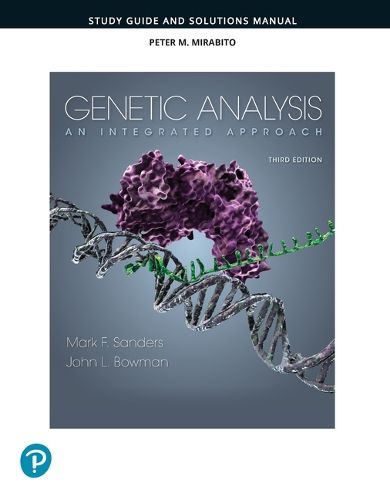Readings Newsletter
Become a Readings Member to make your shopping experience even easier.
Sign in or sign up for free!
You’re not far away from qualifying for FREE standard shipping within Australia
You’ve qualified for FREE standard shipping within Australia
The cart is loading…






Written by Peter Mirabito from University of Kentucky, the Study Guide/Solutions Manual is divided into five sections: Genetics Problem-Solving Toolkit, Types of Genetics Problems, Solutions to End-of-Chapter Problems, and Test Yourself. In the toolkit, students are reminded of key terms and concepts and key relationships that are needed to solve the types of problems in a chapter. This is followed by a breakdown of the types of problems students will encounter in the end of chapter problems for a particular chapter: they learn the key strategies to solve each type, variations on a problem type that they may encounter, and a worked example modeled after the Genetic Analysis feature of the main textbook.
The solutions also reflect the Evaluate, Deduce, and Solve strategy of the Genetic Analysis feature. As not all end-of-chapter problems will require all three steps, the solution is broken down to reflect only the solution strategies required to find the answer. This approach helps students assess the level of problems and the solution strategies that they struggle with the most. Finally, for more practice, 10 Test Yourself problems and accompanying solutions are included.
$9.00 standard shipping within Australia
FREE standard shipping within Australia for orders over $100.00
Express & International shipping calculated at checkout
Written by Peter Mirabito from University of Kentucky, the Study Guide/Solutions Manual is divided into five sections: Genetics Problem-Solving Toolkit, Types of Genetics Problems, Solutions to End-of-Chapter Problems, and Test Yourself. In the toolkit, students are reminded of key terms and concepts and key relationships that are needed to solve the types of problems in a chapter. This is followed by a breakdown of the types of problems students will encounter in the end of chapter problems for a particular chapter: they learn the key strategies to solve each type, variations on a problem type that they may encounter, and a worked example modeled after the Genetic Analysis feature of the main textbook.
The solutions also reflect the Evaluate, Deduce, and Solve strategy of the Genetic Analysis feature. As not all end-of-chapter problems will require all three steps, the solution is broken down to reflect only the solution strategies required to find the answer. This approach helps students assess the level of problems and the solution strategies that they struggle with the most. Finally, for more practice, 10 Test Yourself problems and accompanying solutions are included.